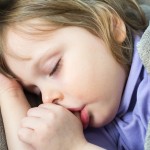
Anterior open bite (AOB) is linked with habits such as non-nutritive sucking habits and tongue-thrust and is relatively common. Interceptive treatments are oaten used to deter these habits to prevent possible malocclusions.
The aim of this review was to evaluate dental and/or skeletal open bite correction effectiveness in growing individuals with the use of habit-interception appliances.
Methods
Searches were conducted in the PubMed, Embase, Cochrane Library, Web of Sciences, Scopus, Google Scholar, Scielo, and Lilacs, ClinicalTrials.gov, European Union Clinical Trials Register, Australian New Zealand Clinical Trials Registry and ProQuest Dissertations and Theses Global databases with no date or language restrictions.
Randomised clinical trials (RCT) or non-randomised clinical trial (nRCT), if the control group (treated or non-treated) was matched to the experimental group according to occlusal or skeletal status were considered. Two reviewers independently selected studies abstracted data and assessed study quality. The Cochrane risk of bias tool was used to assess RCTS and the Methodological Index for Non-randomized Trials (MINORS) for nRCTS.
Overbite was the primary outcome while secondary outcomes included vertical skeletal cephalometric parameters and variables provided information regarding upper and lower incisors position. Outcome means and standard deviations observed before and after treatment were reported, as well as the mean differences within and between groups.
Results
- 11 studies (2 RCTs, 9nRCTs) were included.
- 10 studies investigated the mixed dentition phase.
- Two main appliance types were investigated cribs and spurs.
- All of the studies assessing crib therapy demonstrated that it significantly increased the overbite when compared to untreated controls, regardless the appliance design.
- Meta-analysis (4 studies) found that patients who were treated with cribs presented a consistent increase in overbite (Mean: 3.1mm, 95%CI;2.50–3.75mm), when compared to untreated patients (P ≤ 0.001).
- One study evaluated the effectiveness of spurs showing that this appliance might be effective for the correction of AOB malocclusion.
- One study compared the Bluegrass appliance with the Myofunctional Trainer showing significant improvement in overbite but not demonstrating one as more effective.
Conclusions
The authors concluded: –
This systematic review with a meta-analysis suggested that crib therapy could be considered as an effective treatment for the correction of AOB in growing patients, with the approximate increase of 3mm in overbite. Crib therapy stability and its skeletal effects still need further clarification. The supplementary effect of vertical-pull chin cups (VPCC) as an adjunctive therapy for crib remains unknown. Other habit-interception appliances, such as spurs, still cannot be regarded as effective, according to the available literature.
Comments
The authors have undertaken broad based search to identify potentially relevant studies to answer this question. However they were only able to include 11 controlled studies only 2 of which were randomised. Interestingly the authors noted they observed a higher effectiveness for the crib appliances in the 2 RCTs than the nRCTs, although there was considerable diversity in available study designs. So while the review suggest that an improvement in the AOB of around 3mm may be achieved using crib appliances the limited quality of the available studies means that the results form higher quality studies could change this assessment. Also the authors highlight that whether VPCC improve the effectiveness of these appliance is subject to doubt.
Links
Primary paper
Feres MF, Abreu LG, Insabralde NM, de Almeida MR, Flores-Mir C. Effectiveness of open bite correction when managing deleterious oral habits in growing children and adolescents: a systematic review and meta-analysis. Eur J Orthod. 2016 Feb 3. pii: cjw005. [Epub ahead of print] Review. PubMed PMID: 26846264.

Crib therapy for anterior open bite? https://t.co/TB4GXyf2MQ
Anterior open bite may be corrected with crib therapy https://t.co/TB4GXyf2MQ
Review suggests improvement to anterior open bite with crib therapy https://t.co/TB4GXyf2MQ
Crib therapy for anterior open bite treatment in growing patients? https://t.co/TB4GXyf2MQ
Crib therapy could be an effective treatment for anterior open bite in growing patients https://t.co/TB4GXyf2MQ
Don’t miss- Anterior open bite might be corrected with crib therapy https://t.co/TB4GXyf2MQ
Anterior open bite might be corrected with crib therapy https://t.co/wdsaqvhxjs via @sharethis
This could be interesting and I will post about this soon https://t.co/MTDnZ7myJS
This could be interesting, I managed to miss it when it came out…. https://t.co/825Yjo65gu
[…] Anterior open bite might be corrected with crib therapy […]